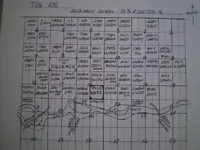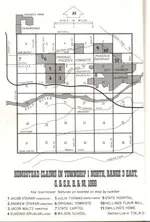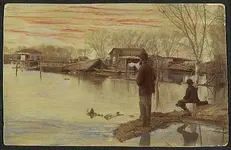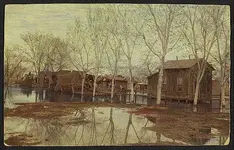Matthew Roberts
Bronze Member
- Joined
- Apr 27, 2013
- Messages
- 1,152
- Reaction score
- 5,090
- Golden Thread
- 0
- Location
- Paradise Valley, Arizona
- Primary Interest:
- All Treasure Hunting
- #1
Thread Owner

Some time ago I was in the Yavapai and Maricopa County tax and property records for the time period 1868 - 1872.
The first homesteads around Phoenix were filed for in February 1868 John Larsen (Swede Larson) was the first man to settle upon and file a Salt River Valley homestead claim at the Federal land office in Florence, Arizona Territory.
On February 24, 1868 Larsen filed for 160 acres ( one 1/4 section) located at T1N. R3E. the NW quarter of section 14.
He was followed by a flood of similar filings. Jacob Waltz filed for his homestead at T1N. R3E. the NE 1/4 of section 16 in April of 1868.
For reference, a Section is 640 acres, one square mile. Sections were broken down into 4 equal quarter sections of 160 acres each.
While there I drew up a quick map of the homesteads around Phoenix from about the 1871 time period. Each square on the map is a 160 acre 1/4 section. The map shows the original town site of Phoenix. Jacob Waltz's homestead and all the homesteads held in the surrounding area which is Township 1 North, Range 3 East of the Salt and Gila River Meridian and Baseline. I also copied the location of the Salt River as it looked in 1870 along with the three crossings of the Salt in those days, The Maricopa Crossing, Gray's Crossing and Wilson's Crossing. Directly to the south of Jacob Waltz's homestead was an area known as "the mesquite". A brushy area of scrub mesquite and river willows unsuited for farming. Still, a number of Mexicans (as many as 70) worked to try and clear that land and raise a crop. They were mostly unsuccessful in the effort. Many of those Mexicans lived on the south half of Waltz's 1/4 section.
One thing to keep in mind when looking at these homesteads is they changed hands at a tremendous rate. The map of 1871 looks nothing like the original map of 1868. Most of the original farmers who filed moved on within two years. Homesteads were sold, traded, abandoned and taken up by someone else. It's an interesting oddity that Jacob Waltz's homestead was one of the few that stayed intact and right where it had always been from his filing in April 1868 through February 1891 when he was driven off his land by the great Phoenix flood. I believe the Starrar brothers, Jacob and Andrew, along with David Schultes and Jacob Waltz were together in a land scheme to hold all the land where they hoped the town of Phoenix would be designated. They were unsuccessful in that endeavor. That is just my personal opinion based on what I've learned from researching the records and other things that were passed down verbally.
Matthew
Last edited:









